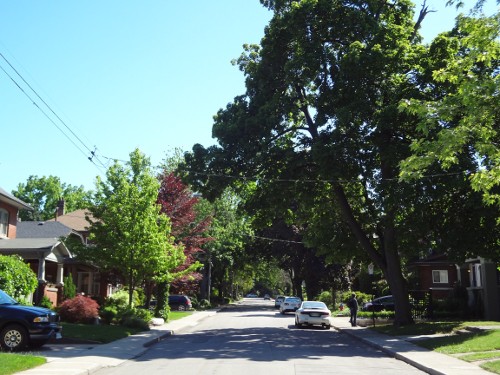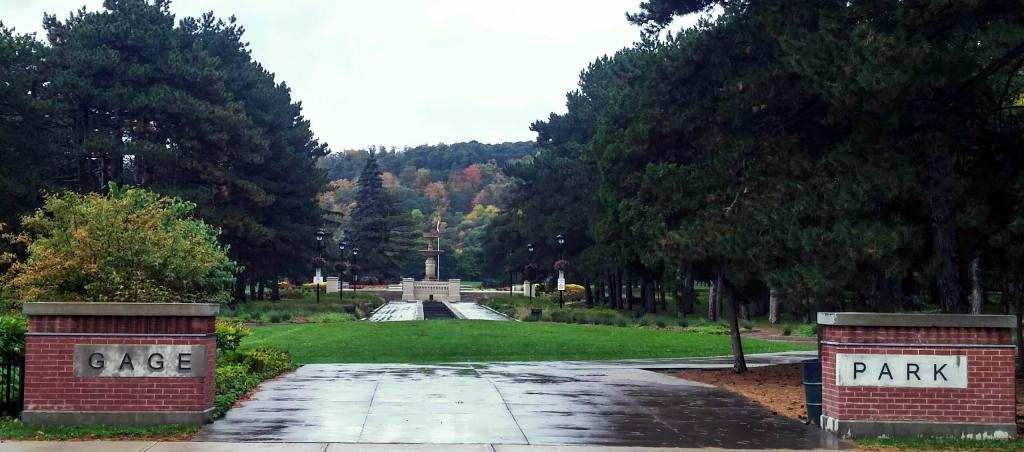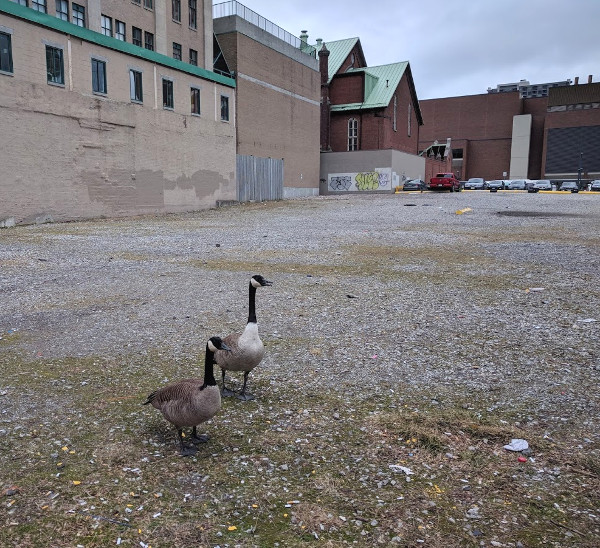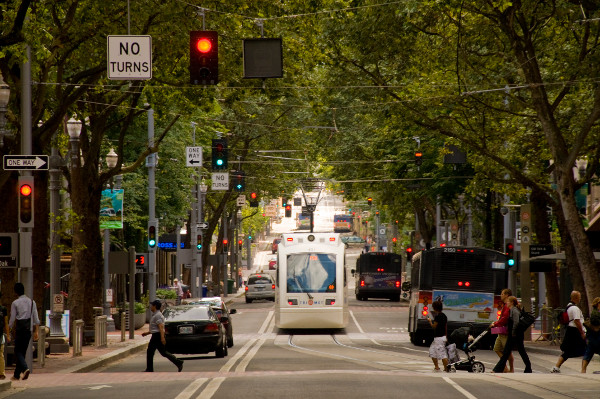The absence of singing birds, frog choruses, forests and wetlands in downtown Hamilton contributes to negative rage, boredom and hatred. Such hellish conditions give vent in nihilistic rock-throwing.
By John Bacher
Published March 20, 2018
The recent riot in central Hamilton has reminded me of a problem I learned when struggling against the Red Hill Creek expressway. This is that central Hamilton suffers from a nature deficit disorder.

Smashed window from Locke Street Riot (RTH file photo)
The absence of singing birds, frog choruses, forests and wetlands in downtown Hamilton contributes to negative rage, boredom and hatred. Such hellish conditions give vent in nihilistic rock-throwing.
While the slogans may be "f* the rich" or a "purely negative approach" toward gentrification and development, these ideas in themselves do not cause riots, vandalism and graffiti. What causes such anger is living in a bleak prison of concrete.
When we campaigned to save the Red Hill valley from a paving blight, a strange bit of analysis came through. Most of us were from the west end of the City, blessed by the wild forested wonders of the Royal Botanical Gardens (RBG). Those who were not from the west end tended to be residents in the east end who lived near the expressway's path.

Tree canopy in southwest Hamilton (RTH file photo)
There was virtually no representation of expressway fighters from central Hamilton. Here we concluded that nobody could love nature, since there was so precious little wildlife to cherish.
Petty parks of central Hamilton, such as Durand Park, the starting position of the riot, likely have toxins in their soils caused by decades of poisonous weed killer applications.
Even the best of them, Gage Park, is still not connected to the nearby Niagara Escarpment. Why not have a bio-bridge over the rail tracks and some patches of ponds, vernal pools and forests to bring this 1920s wonder up to greener standards?

Gage Park (RTH file photo)
Much of our analysis was based on a careful study of how nature in central Hamilton got buried alive. Between Cootes Paradise protected entirely by the RBG there were eleven rivers that were buried. Some of these can be seen in the inlets in Hamilton's industrial waterfront.
Sadly, all of the activism to correct this situation are in the west end. There is an effort to daylight a stream buried by a parking lot in Ancaster, and to restore what had been the RBG's Coldspring Nature Sanctuary. The former sanctuary was paved over in the 1960s by McMaster University for a parking lot.
While Hamilton has created ambitious parks in rural landscapes such as Karst areas prone to building collapse, nothing positive has happened in the areas that have been built up since 1947 when the great founder of the city's parks system, Thomas McQuesten, died.
One of these was the paving over of the Coldspring Nature Sanctuary. Another was McMaster's wrecking of the RBG's magnificent Sunken Gardens. What tops the list was the arresting of protesters for illegally camping in King's Forest Park, to facilitate the City of Hamilton desecrating it with the Red Hill Creek expressway.

Canada geese on a vacant lot in downtown Hamilton (RTH file photo)
Despite my disagreements with the negative tone of the anti-gentrification of the Hamilton Institute's manifesto, there are a couple of passages which properly mock insufficient efforts to bring back life to Central Hamilton. One is the complaint about having native trees die in insufficient planters and cyclists being injured on bicycle lanes.
The problem of dead trees in planters and injured cyclists shows how Hamilton is not taking a serious greening path. The big contrast is with Portland, Oregon.
Hamilton is a city of concrete curbs and gutters. Portland in contrast has its streets lined with bioswales. These provide trees with healthier, well watered places to live. They also give cyclists a safe refuge when cars menace.
Portland's success shows that prosperity can be built on having a more beautiful city. Its tree lined bioswales attract investors who invent and create jobs. Technological innovation is needed to improve humanity's relationship with nature. We need innovations in such areas as health care, pollution reduction and energy efficiency. Such needed creativity is different from the wiles of property specualtors.

Street trees in Portland (Image Credit: American Society of Landscape Architects)
Let us take some effort to ecologically restore central Hamilton is a way to build social peace and prosperity. Consider a few positive actions as the following.
In anticipation of the demise of fossil fuels needed to meet Paris Accords to reduce greenhouse gas emissions, plan to convert Bitumen facility in Hamilton Harbour developed for Tar Sands to a restored marsh.
Develop a program to eliminate concrete curbs. Replace with bioswales that mimic constructed wetlands. Use bioswales for trees such as Pin Oaks that benefit from moist soils. Have swales provide greater safety for cyclists forced to flee from irresponsible motorists.
Look at existing parks and recreational playing fields in Hamilton and develop plans to convert some of their lands to natural habitats. Attempt to restore vanished populations of a elemental indicator species in urban environments, the Green Frog, as has occurred in ravines in Toronto through park naturalization strategies.
Examine opportunities to daylight buried streams, in more challenging locations than west end Chedoke Creek.
Conduct study of abandoned industrial sites for conversion to naturalized parkland habitats. Investigate possibility of using existing structures in such areas for recreational purposes as has taken place in Duisburg, Germany.
Convert inlets in Hamilton Harbour around abandoned factories into swamp forests.
Turn elevated Burlington-Telesa expressway into linear park, similar to New York City, High Line.
One of Hamilton's recent green prophets was Bert Lowes, the founder of the Bruce Trail. He loved to quote from Scripture, that "Without Vision the People Perish." The Hamilton riots show that this is a real danger.
May Lowes' words help turn rock throwers into urban ecological restorationists who mean business.
You must be logged in to comment.
There are no upcoming events right now.
Why not post one?